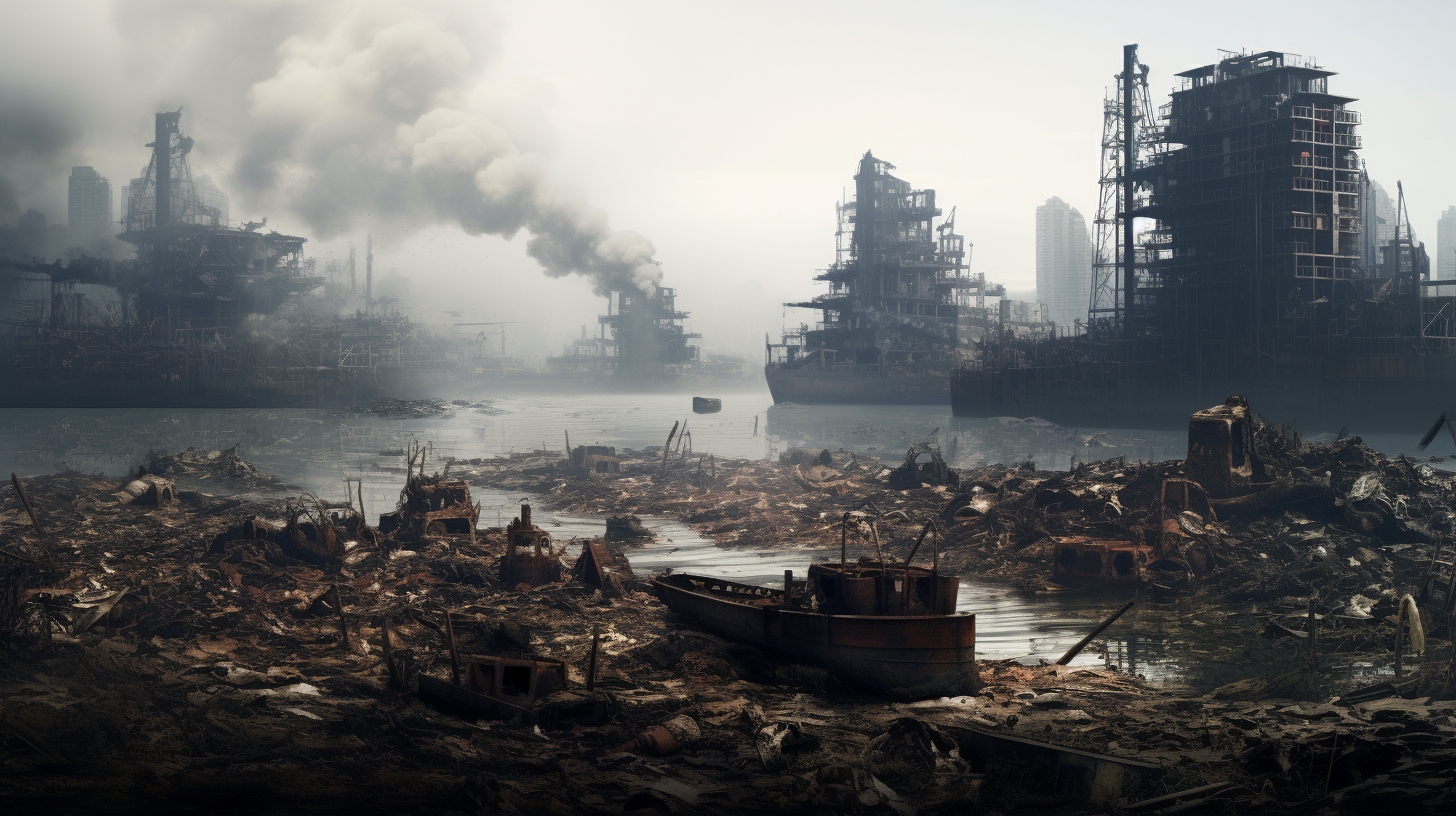In a world where the rhythm of nature’s heartbeat once hummed in harmony with human progress, the tides have turned, swelling to crescendos that wash away the lingering hopes of a bygone era. Tidal Renaissance: Adapting to the Planet’s Rising Pulse takes you on a journey through the waterlogged ruins of coastal cities and into the heart of human resilience as communities adapt to the unyielding rise of the planet’s most pervasive lifeblood—its oceans.
The ceaseless churn of the Earth’s monstrous waves has re-carved the maps, drowning landmarks and legacies alike. Vast stretches of what were once bustling seaside metropolises now lie submerged, with the remaining fragments clinging to a precarious existence over unpredictable swells. But within the desperation, amidst the decrepit remains of ferris wheels and skyscrapers eternally trapped in a briny embrace, beats a testament to human ingenuity.
Like a phoenix rising from the depths, technocrats and the survivors of the swell have envisaged a new way of life with the ‘Aqua-Ark’ — floating cities that sail the relentless seas. These undulating utopias embody the pinnacle of adaptive architecture; hydraulic stilts that dance to the ocean’s capricious whims, polymer-based walls that reject the saltwater’s caustic kisses, and renewable energy systems powered by the ceaseless kinetic pulse of the waves.
Life aboard these arks is no romantic voyage. The residents, modern-day Noachians, have surrendered the stability of terra firma for a nomadic drift. Nautical farms suspended in the salty abyss below yield algae-powered sustenance. The fabric of society is tightly knit, each individual’s role as essential as the bolts holding the arks together. The Ark’s own governance, a sort of fluid democracy, ebbs and flows with the challenges they face, an ever-adaptive tide in itself.
These arks are not just a refuge; they are a petri dish for cultivating advancements that could redefine human capability. The hydro-innovators have birthed contraptions that harness the unruly waves for desalination and energy creation—ojing to futurists a glimmer of hope that humanity’s resilience can outpace its ruin.
The siren song of the sea now resounds with the clangs and clatters of construction as we piece together our dampened dreams. Resilience is not just a platitude; it’s a concrete construct built upon the relentless rise and fall of our liquid adversary.
In this age of relentless tides, the world watches and learns. Scholars pen treatises in their watertight libraries on the rise of aquaculture, the evolution of maritime laws, and the sociological shifts birthed from the brine. It’s an esoteric renaissance, a rebirth baptized in saltwater, stirring a curiosity for a future that could emerge from the deep instead of perishing beneath it.
But let’s not wade into the waters of naivety, for these feats are mere buoys in a churning sea of challenges. Resource scarcity, political upheavals, and the psychological toll of a horizon that forever undulates—these are the cresting waves yet to break. However, in their shadows, a subversive artistry thrives. The impermanence of everything has nourished a subculture with a proclivity for the ephemeral, where the ocean’s palette shapes the art, and music scores are written in the rhythm of the waves.
There’s a dark poetry to it all, the transformative power of the tides reflected in the resilience and reinvention of our kind. In this Tidal Renaissance, we find a stark reminder: when nature flexes her might, humanity must ride her swells or sink into the abyss.
As the waters rise and fall, so too do our spirits. In the relentless rhythm of the tides, there’s a call to action—a summons to adapt, overcome, and, perhaps in this dark tapestry, weave a new thread of existence.
